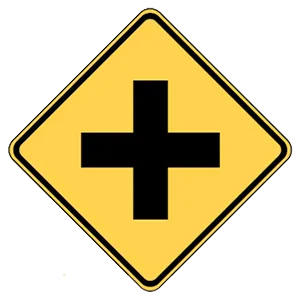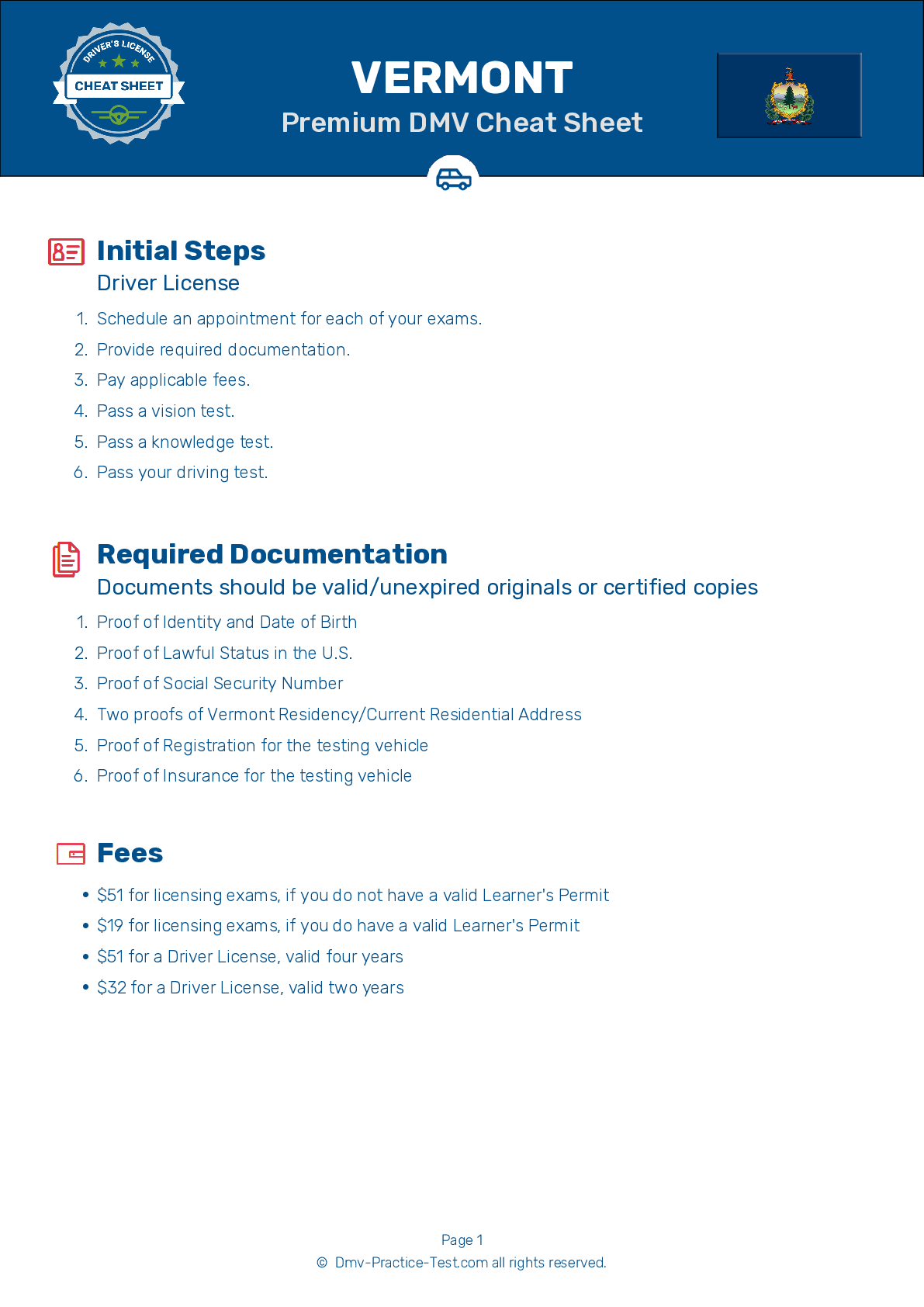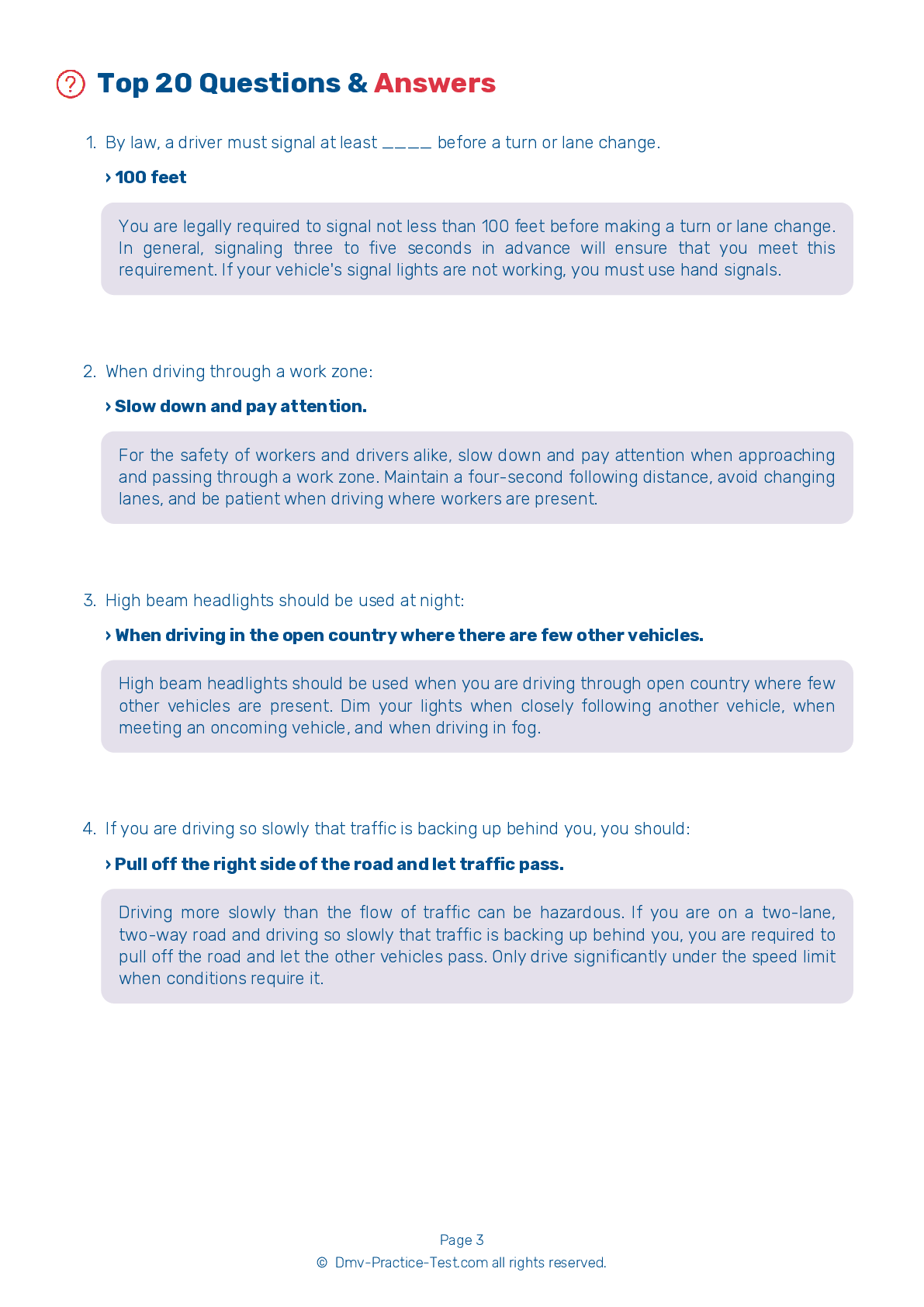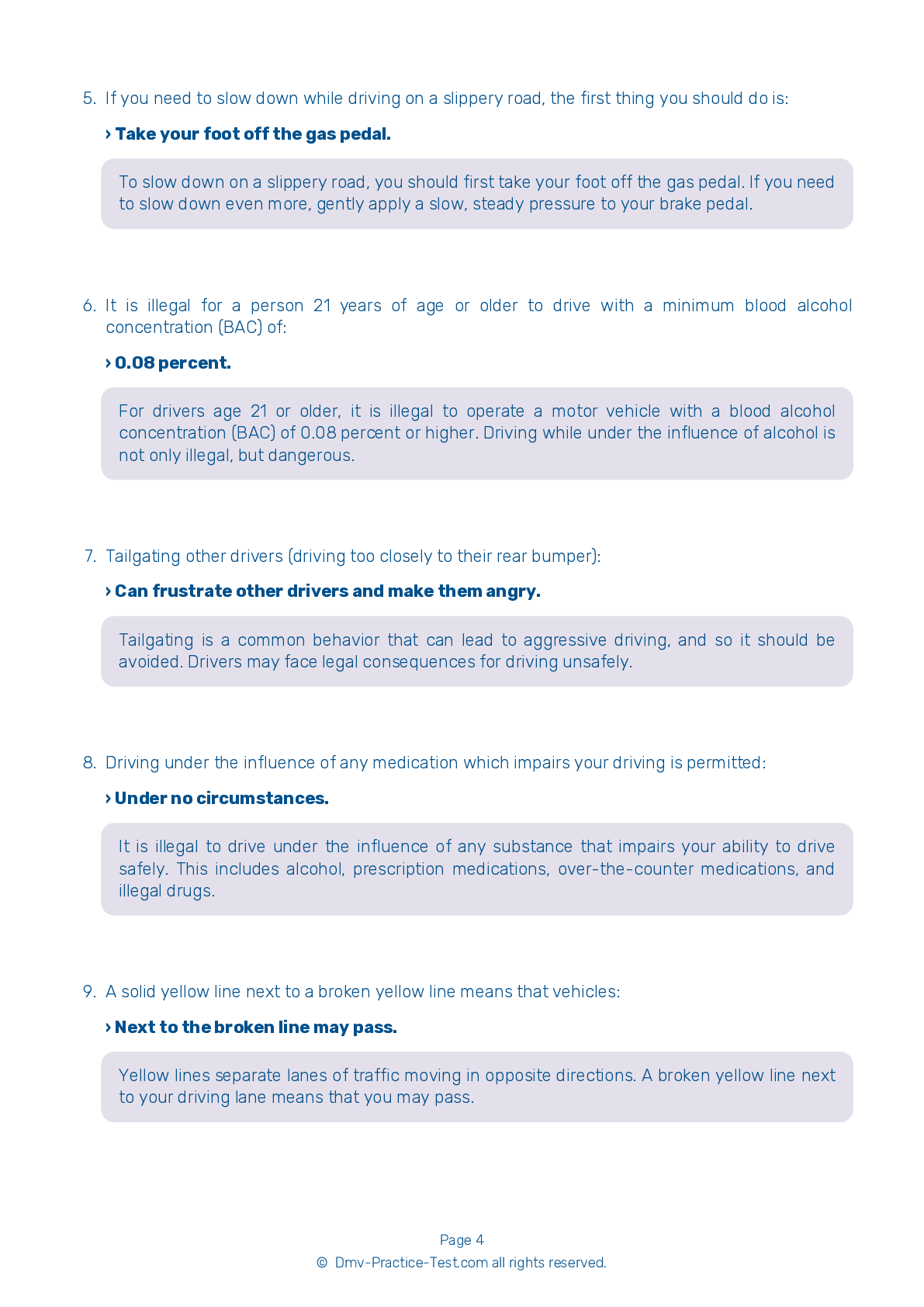FREE Vermont DMV Practice Test #9 Page 2 of 3
The Vermont DMV practise examinations have been updated for January 2025. It includes questions based on the Vermont Driver Handbook's most significant traffic signals and legislation for 2025. Use actual questions that are very similar (often identical!) to the DMV driving permit test and driver's licence exam to study for the DMV driving permit test and driver's licence exam.
On the practise exam, each question gets a tip and explanation to help you remember the concepts. The written component of the official Vermont DMV test will include questions about traffic rules, traffic signs, and driving statutes, as well as knowledge from the Driver Handbook.
To obtain a passing grade, you must correctly answer 16 of the 20 questions. Use the practise exam provided by the Vermont Department of Motor Vehicles to help you prepare for your instruction permit or driver's licence.
The DMV exam is available in several languages.
Using any kind of testing assistance will result in an automatic fail, and the DMV may take additional action against your driver's licence, so stay away from it.
7 . While driving, you come upon a sign displaying the words “Reduced speed, 35 mph." This means:
"Reduced speed" signs inform drivers that they must reduce their speeds. If a new speed limit is posted on one of these signs, the new speed limit begins at the sign.
8 . As you near an intersection, the traffic light changes from green to yellow. Your best action is to:
A steady yellow traffic light indicates that the light will soon change to red. You should be prepared to stop for the red light, if it is safe to do so.
9 . When a traffic signal light turns green, you should:
A green light tells you that you can go through the intersection. However, you must first yield the right-of-way to traffic and pedestrians who are still in the intersection.
10 . A driver entering public traffic from a driveway or private road:
If you are entering traffic from a driveway or private road, you should yield to drivers already on the public road. Merge safely into traffic when you are able to do so.
11 . What color are pavement markings that separate traffic lanes moving in opposite direction?
Yellow lines are used in the center of the road to separate lanes of traffic moving in opposite directions.
12 . This sign shows one type of:

This sign indicates that an intersection with a crossing road is ahead.
13 . Emergency vehicles:
You must yield the right-of-way to police cars, fire engines, ambulances, or any other emergency vehicles using a siren or air horn and a red or blue flashing light. Follow any instructions given over the emergency vehicles' loudspeakers. Emergency vehicles often follow each other so you should proceed only when you are certain the way is clear.
2025 Vermont | Frequently Asked Questions
1. Not checking mirrors and blind spots before changing lanes or turning.
2. Speeding or driving too slowly for the conditions or posted speed limit.
3. Not coming to a complete stop at stop signs or red lights.
4. Incorrect signalling or not signalling at all.
5. Poor parking, especially parallel parking.
Remember, practice makes perfect, so take time to hone your skills.



